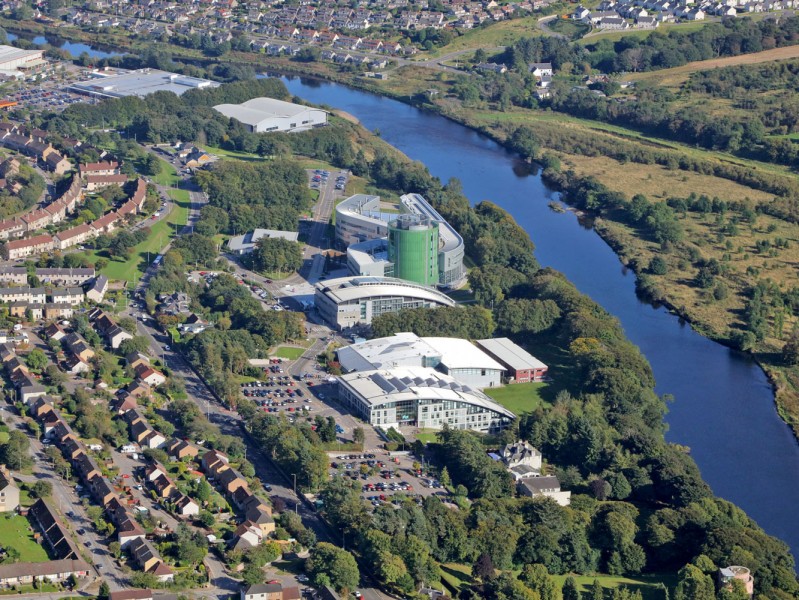
Our campus habitats are used by a variety of wildlife, including badgers, foxes, otters, roe deer, and a variety of bird, butterfly and bat species.
Find Out MoreSustainability
Our unique riverside campus lies on the banks of the River Dee and is home to a vast array of flora and fauna which the University is committed to helping thrive.
Our 23-hectare campus at Garthdee runs 1.8 kilometres along the River Dee. Our campus includes a densely wooded area, known as ‘the island’, and a further 22 hectares of floodplain land at Waterside Farm on the opposite side of the river. Our campus is open to staff, students, and the community, allowing all to benefit from the increased presence of nature on our site. Paths on campus are regularly used by the local community to walk their dogs, access our green spaces and enjoy the river.
The ongoing restoration of Waterside Farm as a nature reserve and biodiversity site exemplifies sustainable and environmental best practices. The project provides many opportunities to engage in biodiversity activities with benefits for health and wellbeing. This reserve will provide green space for students and the local community, with volunteers needed to help with the transformation. The weekly “Waterside Wednesdays” volunteer sessions are regularly attended by students, staff and the local community. Sign up to be a Waterside Wednesday volunteer by booking online:
Our campus habitats are used by a variety of wildlife, including badgers, foxes, otters, roe deer, and a variety of bird, butterfly and bat species.
Find Out MoreWaterside Farm is a 55-acre site that sits directly opposite our riverside campus. The restoration project is one of the biggest biodiversity projects known at a university campus in Scotland.
Find Out MoreStaff and students are invited to capture the vibrant biodiversity on our campus, from lush green spaces to diverse wildlife.
Find Out MoreCookie Consent
We use cookies on this website to improve your browsing experience. Some of the cookies are used for analysis and marketing purposes. For more details see our privacy and cookie statement.
Strictly Necessary Cookies
These cookies are essential in order to enable you to move around the website and use its features. You can only disable these cookies through your browser settings.
Performance & Marketing Cookies
We use cookies to collect information about how visitors use the website and to improve the user experience. We sometimes use cookies to assist with the personalisation of marketing for courses and services, they may be used by our media partners to provide targeted media on other websites.

